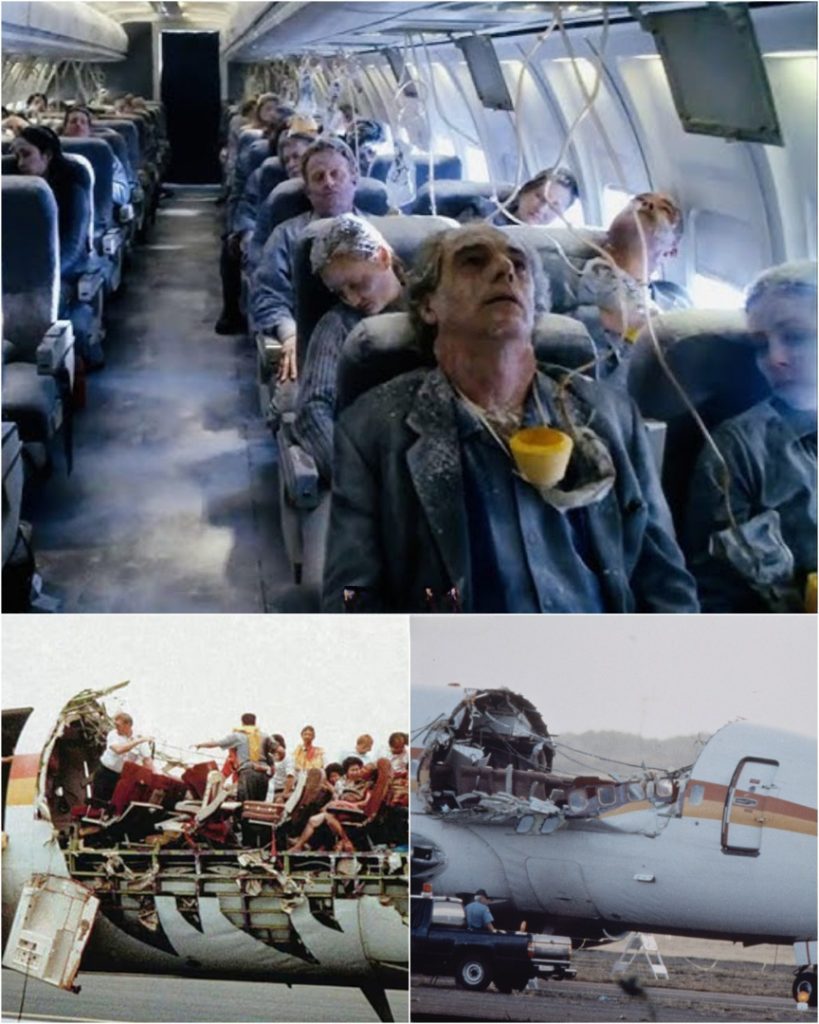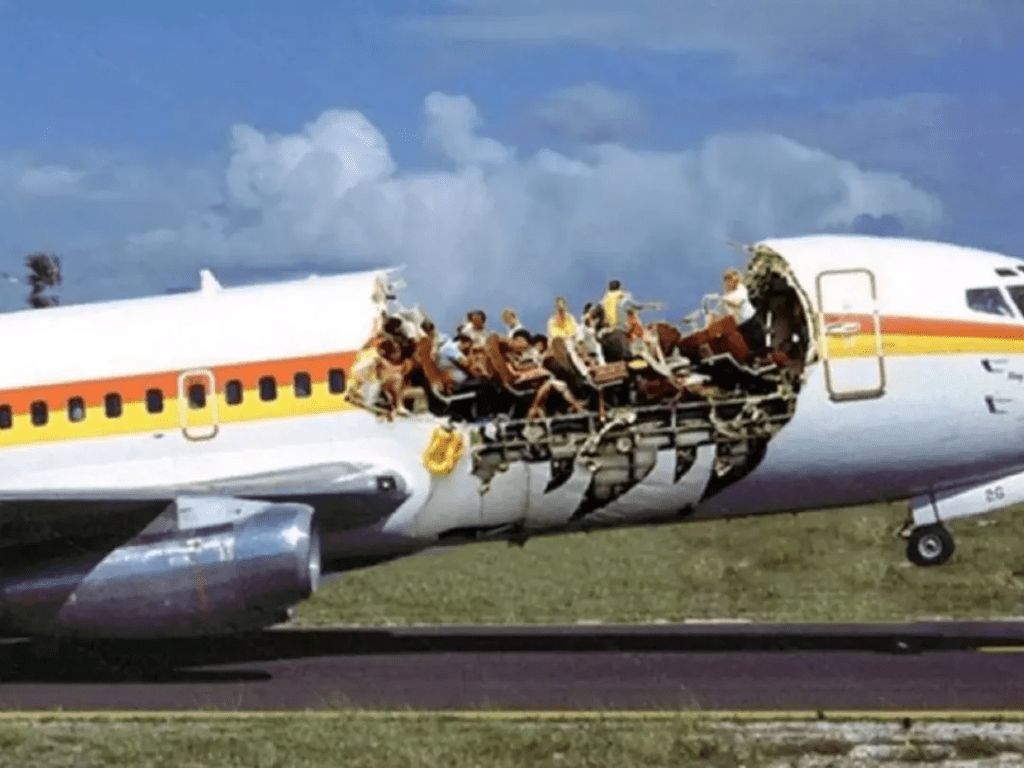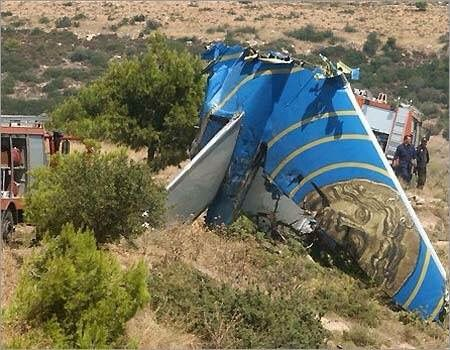A Flight That Should Have Been Ordinary
On the morning of August 14, 2005, Helios Airways Flight 522 lifted off from Larnaca, Cyprus, bound for Athens and then Prague. It was the kind of late-summer hop that travelers barely remember—clear skies, a routine Boeing 737, 121 passengers expecting nothing more than a quiet trip across the blue Aegean. Yet, somewhere above the Mediterranean, normal gave way to eerie silence.

Controllers in Athens soon realized something was wrong. The jet stayed on its path at 34,000 feet, but repeated radio calls brought no reply. The radar showed the plane circling in a holding pattern, almost as if it were waiting for instructions it would never receive. Minutes stretched into an hour. Concern hardened into alarm.
The Silent Encounter in the Sky
Greek fighter jets scrambled and quickly reached the airliner. What they found looked like a scene from a nightmare. Frost coated the inside of the cockpit windows—a telltale sign the cabin had lost pressurization. The captain sat slumped, unmoving. The first officer was equally still.
Peering through the cabin windows, the fighter pilots saw oxygen masks dangling and passengers motionless, their heads tilted as though in an endless sleep. No one waved. No one panicked. It was as if time itself had stopped.
Then, against the backdrop of this chilling stillness, a single figure appeared: flight attendant Andreas Prodromou. Wearing a portable oxygen mask, he stepped into the cockpit and tried to take control. For more than two hours, Andreas had remained conscious, using a small oxygen tank while everyone else succumbed to hypoxia. Fighter pilots watched as he reached for the controls, attempting small course corrections. But the engines were dying; fuel was nearly gone. At 12:04 p.m., the plane descended helplessly and crashed into the hills near Grammatiko, north of Athens. There were no survivors.
Video : Helios Flight 522: How a Single Switch Killed 121 Passengers
Speculation and Unanswered Questions
News outlets quickly dubbed it the “ghost plane.” For years, theories ran wild. Did terrorists strike? Had the pilots fallen asleep? Was there a secret military operation? Rumors of cover-ups and conspiracy swirled as investigators searched for answers. The reality, when it finally emerged, was both simpler and more haunting.
The Fatal Chain of Errors
The tragedy began not in the sky but on the ground. During a maintenance check the day before the flight, engineers had set the cabin pressurization system to manual. In the rush to complete their work, they forgot to switch it back to automatic.
On takeoff, the pilots missed the setting during their preflight checklist. As the aircraft climbed, the cabin air thinned rapidly. At high altitude, oxygen levels dropped so low that thinking clearly became impossible. The warning horn sounded—but here lay a deadly design flaw. The sound was identical to the horn that warns of an incorrect takeoff configuration. Believing the alert to be a different, less critical issue, the pilots began troubleshooting what they thought was an air-conditioning fault.

Within minutes, hypoxia—a lack of oxygen—clouded their judgment. Speech slurred. Reasoning slowed. Soon both pilots lost consciousness.
Emergency oxygen masks deployed in the cabin, but those masks supply air for only about 15 minutes—long enough for a normal emergency descent. Autopilot kept the aircraft at cruising altitude instead. One by one, the passengers and crew slipped into unconsciousness. Only Andreas Prodromou managed to stay awake, sustained by a portable oxygen bottle and his own training as an amateur pilot.
AI Brings New Clarity to the Final Moments
For nearly two decades, investigators believed they understood the broad outline of the disaster. Yet key details—how long Andreas fought to save the plane, what subtle signs the pilots gave before losing consciousness—remained unclear. Recently, advances in artificial intelligence changed that.
Machine-learning experts revisited the cockpit voice recorder using cutting-edge audio analysis. By filtering background noise and enhancing faint sounds, the AI uncovered traces of breathing, the creak of a cockpit door, and a voice issuing quiet command phrases—evidence that Andreas not only entered the cockpit but actively tried to fly the aircraft. Rhythmic tapping noises, once dismissed as static, matched patterns of manual input on the autopilot controls.
Video : Ghost Plane | No One in Control of this Boeing 737 | Helios Airways Flight 522 | 4K
AI-driven medical modeling then recreated the physiological timeline of hypoxia. By combining cabin pressure data with human oxygen-deprivation studies, researchers could map minute by minute when the pilots likely blacked out, when passengers lost consciousness, and how long Andreas could remain alert with supplemental oxygen. These reconstructions confirmed what fighter pilots saw from the sky: a lone crew member, battling time and gravity until the engines flamed out.
Aviation Lessons Written in Tragedy
The Helios Flight 522 disaster forced the aviation world to confront uncomfortable truths. Airlines overhauled maintenance procedures to ensure pressurization switches could never be left in manual without explicit confirmation. Pilot checklists were updated so that any non-standard setting is now verified twice before takeoff.
Aircraft manufacturers redesigned alert systems to avoid sound-alike warnings. Today, the alarm for cabin pressurization loss is unmistakably different from a takeoff configuration horn. Pilot training also evolved, placing greater emphasis on recognizing the early signs of hypoxia and practicing emergency descents under realistic conditions.

Technology’s Role and Human Responsibility
The AI breakthroughs that re-examined the Flight 522 recordings show how far technology has advanced. Modern monitoring systems can now analyze pilots’ speech patterns and breathing in real time, flagging signs of impairment long before disaster strikes. Yet the story of the “ghost plane” remains a cautionary tale: even with better tools, human oversight and disciplined procedures are irreplaceable.
Conclusion
AI has finally given voice to the silence of Helios Flight 522, revealing the courage of a lone flight attendant and the tragic cascade of human errors that doomed the plane. The ghost plane mystery was never about supernatural forces. It was about small oversights that grew into catastrophe—and the quiet hero who fought, quite literally, to the very last breath.


